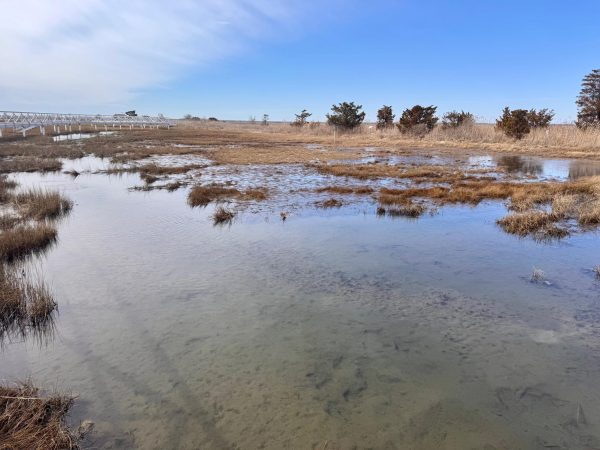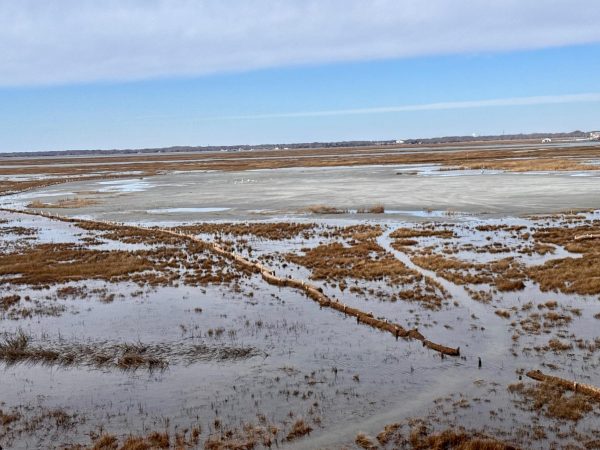
A Cape May County staple, The Wetlands Institute has been a part of the local community for over 50 years. (Shayne Crowley)
In the marshland of Stone Harbor, there is a place that conserves wildlife, teaches future generations, and fights against climate change: The Wetlands Institute.
A Cape May County staple, The Wetlands Institute has been a part of the local community for over 50 years. Known for its efforts in conservation with Diamondback Terrapin turtles and its educational programs for children and teens, the organization has recently finished a project to help understand and fight the climate crisis.
Seven Mile Island, a project partnered with the U.S. Army Corps of Engineers, the State of New Jersey, The Wetlands Institute, and the USACE Engineer Research and Development Center, aims to fight the degradation of the marshland in Stone Harbor.
“With accelerating sea level rise through climate change, the marsh grass is getting flooded more and more frequent,” said Devin Griffith, Marketing & Communications Specialist for The Wetlands Institute. “And if marsh grasses are flooded too frequently, eventually they die.”

The project includes several islands around The Wetlands Institute, including Gull and Sturgeon Island, but the most prominent is the marsh directly next to the institute’s headquarters, Scotch Bonnet Marsh.
Using a two-mile-long dredging pipe to avoid damaging natural habitats or canals, chemical-free sediment made up of mud and sand was put on the degraded marsh. Biodegradable coconut fiber logs surround the 8-acre area covered in sediment—the idea is to keep it from disrupting the current terrapin habitat.
The hope is that the marsh adapts to the sediment, grows through it, and restores the luscious tall green grass from its degraded and water-pool-covered state. The project combats sea level rise so that the natural habitat of the Diamondback terrapins, beach-nesting birds, and wading birds can be preserved. Marshes, however, also protect others—the humans who live on and near them.
“Marshes act as natural buffers to all these communities that sit behind them, so they absorb a lot of flood water and a lot of wave energy,” said Griffith. “If we lose these salt marshes, we lose that protective feature of them.”
Griffith explained that the area’s marshes play an integral role in flood prevention. Even during Hurricane Sandy, coastal marshland saved roughly $600 million of property damage due to flooding in the northeast. According to Coastal Resilience, New Jersey alone saved approximately $425 million.
The project, finished in December 2024, is not expected to show results for roughly another three years, at the minimum, but the Institute doesn’t see a likely chance of failure, or even a chance of failure at all, even if the grass does not grow back.

“There’s also no telling what happens to the site,” Griffith said. “If it doesn’t re-breed, maybe it will become a terrapin nesting habitat, or black skimmers will develop a colony here. Who knows?”
No matter the outcome, The Wetlands Institute remains committed to conservation and education, emphasizing that teaching others is just as important as any restoration effort.
“Education is a huge component of what we do,” Griffith added. “Arguably, in my mind, I think it’s the most important thing, because you can do wonderful research, these incredible projects, and if you’re not educating people about them, then what’s really the point?”